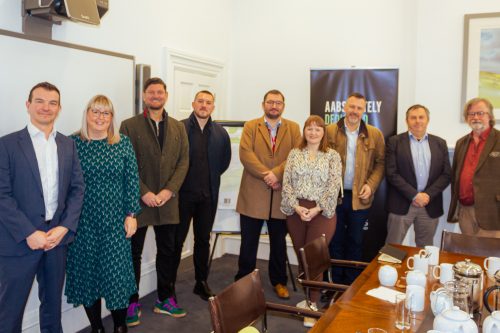Why the fear of failure hampers innovation

Are you prepared to fail? More than that, are you willing to fail?
In a wide-ranging discussion on innovation, creativity, and growth at the latest of TheBusinessDesk.com’s round table series on intangible assets, business leaders identified a fear of failure as one of the biggest constraints on innovation.
The discussion, at sponsor Sagars Accountants’ office in Leeds, dove right into a core issue: are we, as a culture, truly innovative?
Stewart Boutcher, chief technical officer at security consultancy Veracity Trust Network, said, “I did work in California for a time. In America the whole idea about innovation is that VCs are far more interested in you if you fail three or four times. Whereas in this country, failure is seen as, ‘Oh, we shouldn’t touch them with a bargepole.’ And that’s a problem.”
Amy Russell, director at Crescent Business Support, which works extensively with start-ups and SMEs, said the fear of failure was instilled in schools. “I think in 10, 15, 20 years’ time it’s going to change the innovation markets, because we’re going to have people who are scared to try anything.”
Michael Croft, owner of consultancy innovation people, said his firm had researched how people recognise patterns. “There’s a fundamental distinction between those folks who are transmitter dependent – they’re thinking about internal systems, cultures, whatever – and those people who are responder dependent, in other words looking to the outside world.
“I think one of our difficulties is that culturally, in the UK, we’re very into transmitter dependence, so the patterns we can expect have a particular perspective on risk. Understanding the patterns people perceive, I think, is critical to understanding potentiality in terms of innovation.”
Richard Hall, managing director of product design innovators PD-M, pointed out that innovation doesn’t have to be earth-shattering. “Innovation is the improvement of a product or service, which uses new technologies to pivot a business or an organisation. Innovation can be iterative or transformational. It doesn’t need to be sexy.”
Risk aversion has a significant impact on start-ups’ ability to find the funding they need to get products out and to grow.
Michael Collins, business development manager at Growth Lending Group, said that the risk-averse culture was partly driven by capital providers, in particular corporate banking.
“I agree it should change, and that capital providers should be forward looking and more understanding,” he said.
“Securing high street bank debt should be the pinnacle of capital providers – it’s cheap and it’s safe and secure. However, it’s probably the most restricted out of any capital providers out there.”
What all attendees agreed was that companies need greater awareness of what’s available to help them innovate.
“People don’t know what is out there that they can access,” said Amy Russell, director of Crescent Business Support.
She pointed out that innovation could mean better business processes rather than new products.
”We work with businesses who have their whole business in one spreadsheet. Their turnover is fantastic. But it’s all in a spreadsheet, you know that all their data is in a spreadsheet. We’re helping them look at systems that will stop them having everything in that one spreadsheet that could fall over at any minute.”
Richard Cooper, of Innovate UK, agreed. “Smarter adoption, which most people are aware of, is not actually about next generation AI – it’s about getting manufacturers and vendors somewhere in Mirfield to get beyond an Excel sheet to have a management MLP, just to do something semi-automated,” he said.
Tracey Flannery, managing director of Pro-Development (UK), said that many established companies simply wouldn’t understand the language of innovation and intellectual property.
“It’s completely different when you’re in a science park or in Nexus, to being a manufacturing company making sealants, a family company. They wouldn’t regard themselves as an innovative business, but they are.
“For the people who provide the funding, it’s finding those businesses and supporting them, and introducing them to some of the options. It’s educating those people that there is support around them – the people who have not come out of the science background or innovation zones.”
The solution to this, the panel agreed, was to build better communities around innovation and entrepreneurship.
“Innovation does not have to be in a vacuum,” said Gareth Scargill, deputy director of Nexus at the University of Leeds. “We believe it comes with three Cs: creativity, collaboration and community.
”The most important of the three is community. We’re very proud of our community at Nexus, but we are just part of the wider community. I think we need to strengthen the community in this city and this region. First and foremost that will drive innovation, because we can’t do it on our own.”
Carrick, of Sagars, agreed. “I think far too often, particularly in our industry, we’re not talking to business leaders enough, we’re not talking to funders enough. We need to get more into community discussions.”
This is the first of two reports from the third round table discussion of intangible assets and innovation. The second report focuses on funding and the challenges of valuing intangible assets.
The intangibles series is sponsored by Sagars Accountants, an AAB Group company, Aon, Freeths and Growth Lending Group.









